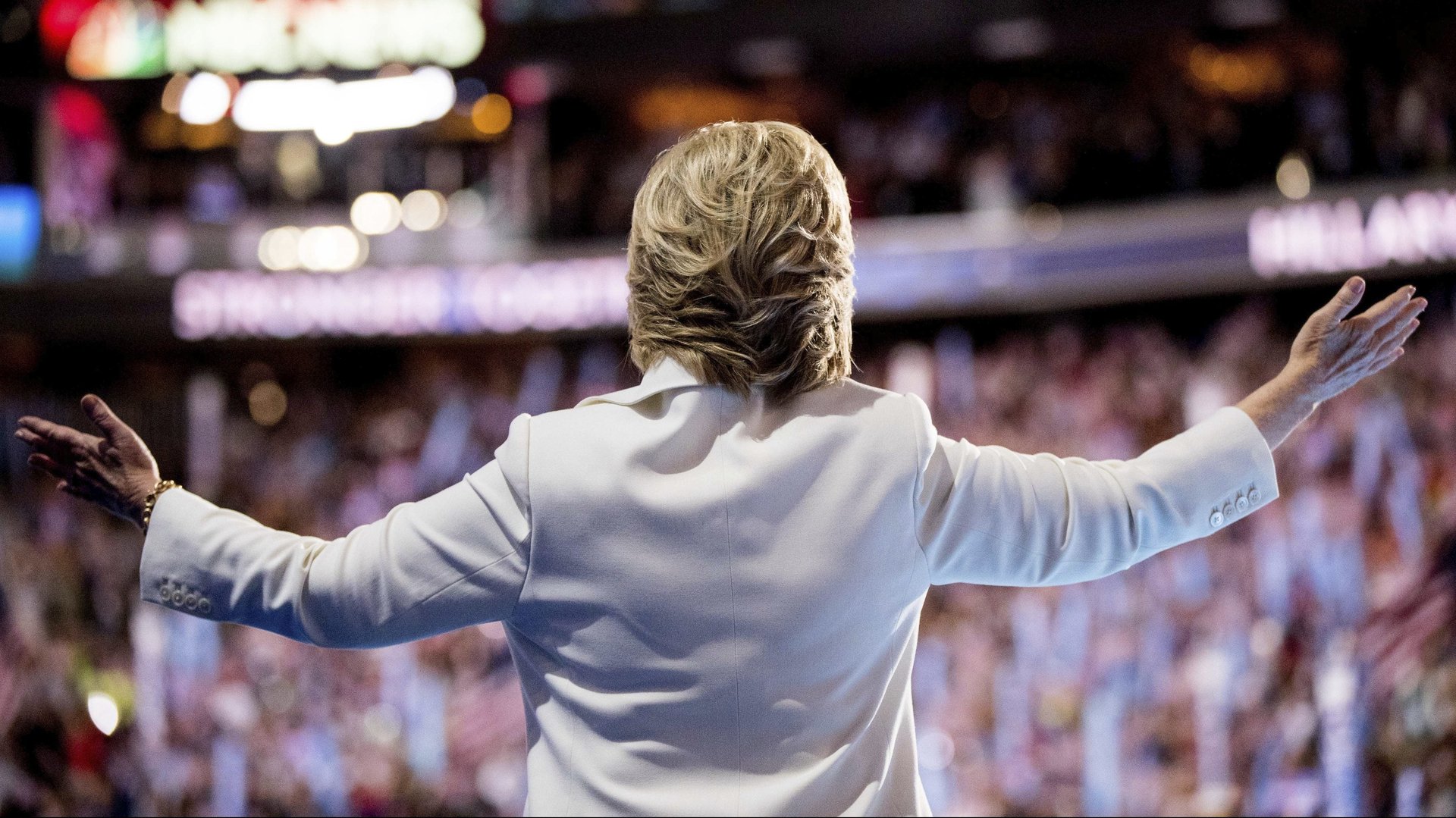“There’s no room for cowards in this house”: Is forcing your child to face her bullies the best way to raise a future president?
In a strikingly personal moment on the last night of this week’s Democratic National Convention (July 28), the party’s nominee for president, Hillary Clinton, recounted an upsetting experience with bullying, from when she was around 4 years old.


In a strikingly personal moment on the last night of this week’s Democratic National Convention (July 28), the party’s nominee for president, Hillary Clinton, recounted an upsetting experience with bullying, from when she was around 4 years old.
“I would have, like, a bow in my hair, and the kids would all pick on me,” she recalls in a short documentary that played before she took to the stage. “It was my first experience of being bullied, and I was terrified.”
One day she was running into her house to escape a bully, Clinton recalled, and she was blocked by her mother, Dorothy Rodham, who responded to the the young Hillary’s distress with steely toughness. “She said to me, ‘There’s no room for cowards in this house. You go back outside and figure out how to deal with what these kids are doing.'”
Clinton paints her mother’s actions in positive terms: “My mother wanted me to be resilient and she wanted me to be brave,” she said in the video. “She never let me back down from any challenge,” she said later, in her acceptance speech.
But for parents of bullied children, it’s hard to know what’s the right approach. Does forcing your child to face her bullies head on, like Clinton’s mother did, really breed courage and resilience?
That’s a hard question to answer. “The problem with bullying is that it is situation-specific,” said Shelley Hymel, a psychologist at the University of British Columbia who has studied bullying. She called Clinton’s mother’s tactic “a high-risk reaction”: “It can work,” she said. “It can also mean they get beaten up.”
It could even make children become bullies, Hymel said (adding, “not that I’m calling Hillary a bully”). If a victimized child fights back, verbally or physically, and it works, they might start bullying others, Hymel said. On the other hand, ”had [Clinton] lost, she could have become more timid.”
It’s unclear whether Clinton’s mother offered her young daughter more specific guidance, and Clinton did not share how she ultimately dealt with the bullies. But simply urging a kid to “figure out how to deal with what these kids are doing” is quite a vague piece of advice, Hymel pointed out. Without a specific tactic for dealing with a bully, she said, “you don’t know what a kid’s going to decide to do in retaliation.” It wouldn’t be so unreasonable for a child to think they’re supposed to respond with violence.
So what’s a better approach? “In most cases, we recommend kids get help from an adult,” Hymel said. If trying to talk to the bully alone doesn’t work, for example, children can try bringing an adult to stand beside them as they address the bully.
Organizations concerned with bullying tend to give similar advice. The US Department of Health and Human Services’s StopBullying.gov initiative recommends adults get involved in bullying immediately and support the victim. The Bully Project suggests bullied kids find an adult ally to help them solve the problem. And the National Bullying Prevention Center urges kids to come up with an action plan (pdf) for dealing with bullying.
Her mother’s advice apparently turned out fine for Hillary Clinton, who went on to a successful career in law, advocacy, and politics. And it’s quite a common approach, Hymel said. But there’s no guarantee that it will work for every child, she said, adding, “I would never tell my kid that.”